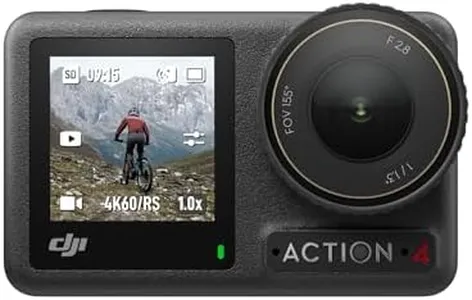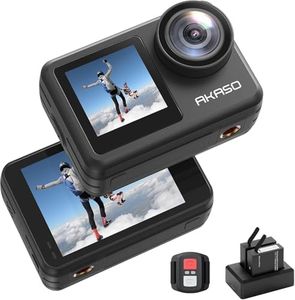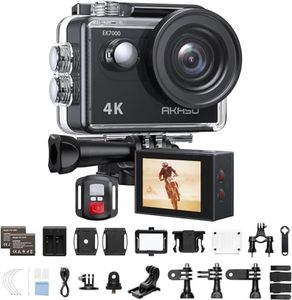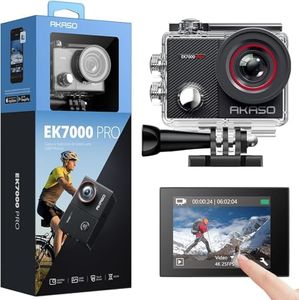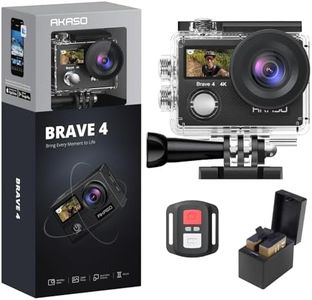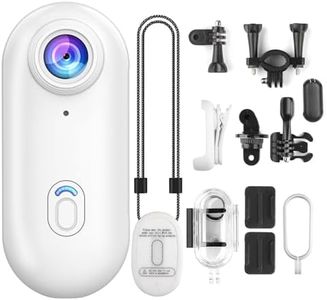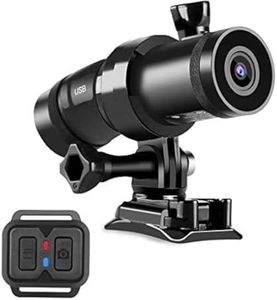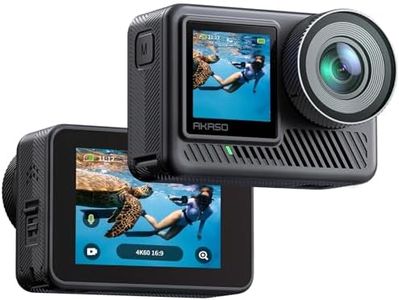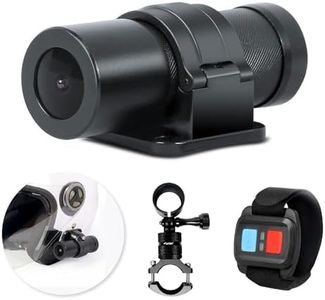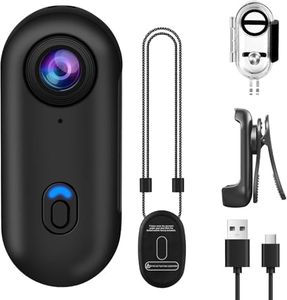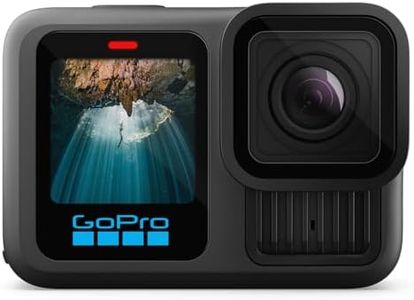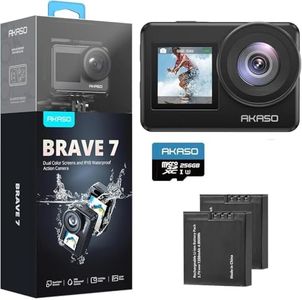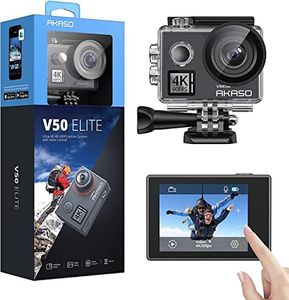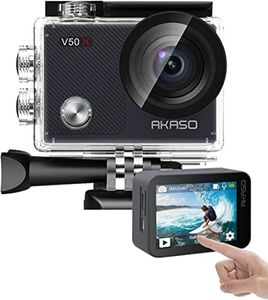We Use CookiesWe use cookies to enhance the security, performance,
functionality and for analytical and promotional activities. By continuing to browse this site you
are agreeing to our privacy policy
10 Best Helmet Cameras
From leading brands and best sellers available on the web.Buying Guide for the Best Helmet Cameras
Choosing the right helmet camera can make a big difference in how you capture your adventures, commutes, or sports activities. Since helmet cameras are meant to record from your point of view, it’s important to find one that fits your needs in terms of video quality, ease of mounting, battery life, and durability. Think about what activities you'll be using the camera for—cycling, skiing, motorcycling, or something else—as your main use will decide which features matter most to you. Comfort, mounting options, and how easy it is to operate the camera when wearing gloves or while in motion are also important factors to consider.Video ResolutionVideo resolution refers to how clear and detailed your footage will look. The most common options are 1080p (Full HD), 1440p, and 4K. 1080p is usually enough for sharing on social media or for basic needs, but 4K offers sharper images and is better if you plan to edit your videos or view them on a large screen. Choose higher resolutions if video clarity is your top priority or if you want to capture every detail of fast action; for simpler sharing and saving space, 1080p is often sufficient.
Frame RateFrame rate is how many pictures (frames) the camera takes every second to make up the video, usually shown as fps (frames per second). A higher frame rate like 60fps makes motion look smoother, especially during fast activities like biking or skiing, while 30fps is standard for everyday use. If you plan on doing slow-motion edits or want extra smooth footage, aim for higher frame rates. For basic documentation or casual use, lower frame rates work well and save memory card space.
Field of View (FOV)Field of view is how wide an area the camera can record. A wider FOV captures more of the scene around you, making footage more immersive but can also cause a slight fish-eye effect. Narrow settings focus more on what's directly ahead and can look more natural. If you want to record everything in front and around you, a wide field of view is best; if you want to reduce edge distortion or just focus on the road or trail ahead, go for a narrower FOV.
Mounting OptionsMounting options describe where and how the camera attaches to your helmet. Some cameras come with universal mounts or multiple ways to secure the device, while others have specific mounts designed for certain helmet types. Consider what helmet you use and whether you need flexibility for different helmets or activities. A secure and stable mount is crucial for safety and for avoiding shaky footage.
Battery LifeBattery life determines how long the camera can record before needing a recharge. Recording at higher resolutions or frame rates can drain the battery faster. For longer activities or trips, look for cameras with longer-lasting batteries or swappable battery options. If your activities are brief or you have easy access to charging, shorter battery life may be acceptable.
Durability and Weather ResistanceDurability and weather resistance refer to how well the camera holds up against bumps, drops, water, and dust. Some cameras are fully waterproof or come with protective housings, making them suitable for rain, snow, or underwater recording. If you plan on riding in all conditions or in rough environments, make sure your camera can withstand the elements; for mostly indoor or dry use, less rugged models may suffice.
Ease of UseEase of use covers how simple it is to operate the camera, especially when it’s mounted on your helmet and you're in motion. Large buttons, voice commands, or remote controls make it much easier to start or stop recording without stopping your activity. If you often wear gloves or need to adjust settings on the go, look for models designed for quick and easy operation.
Storage CapacityStorage capacity is about how much footage you can record before needing to swap out memory cards or transfer files. Cameras use microSD cards or built-in storage. Higher resolution and frame rates require more space. If you plan on filming long trips or in high quality, look for cameras that support large cards or offer easy ways to swap storage. For shorter or lower-resolution clips, less storage is needed.
